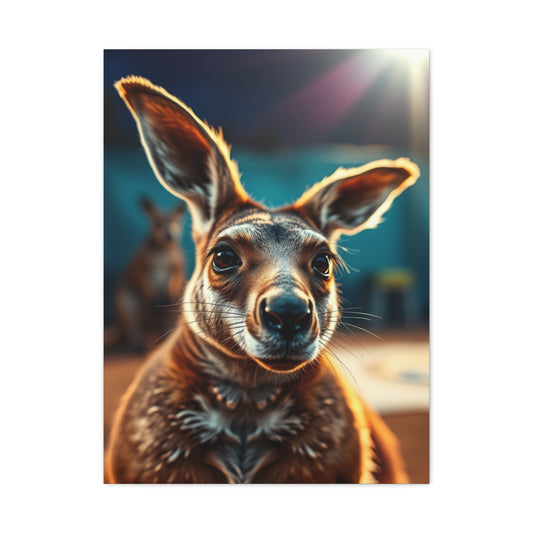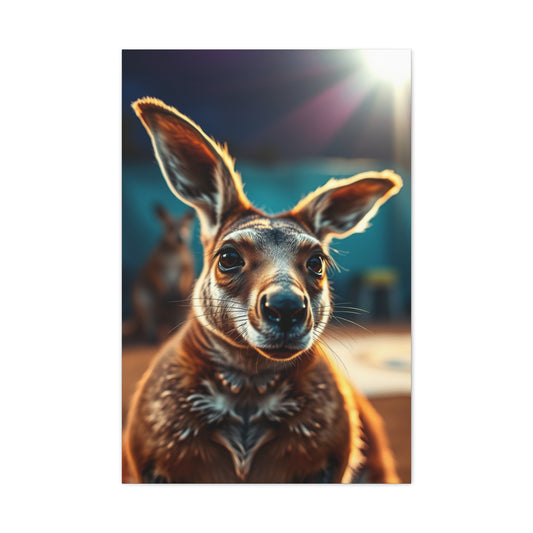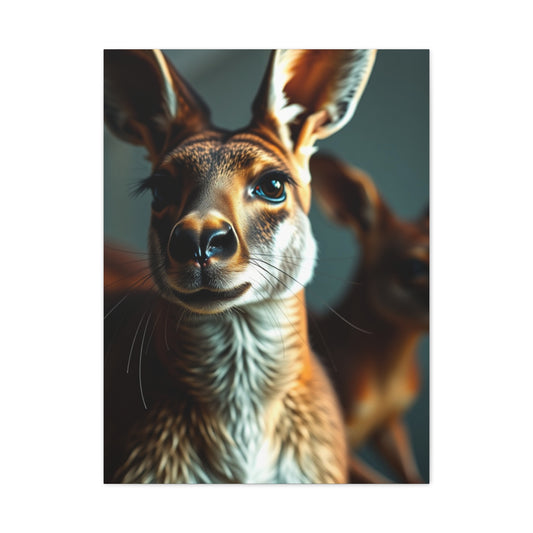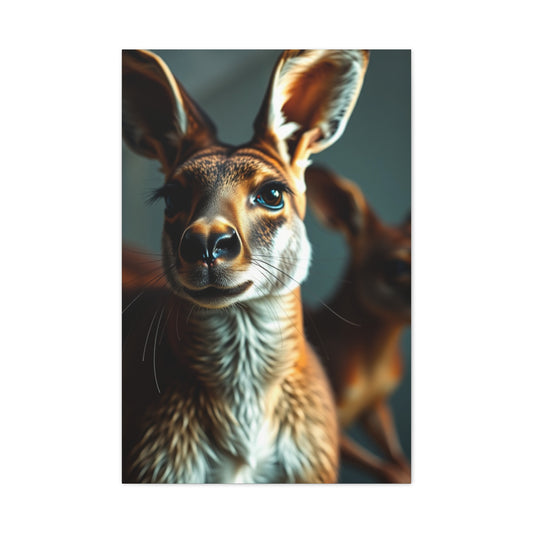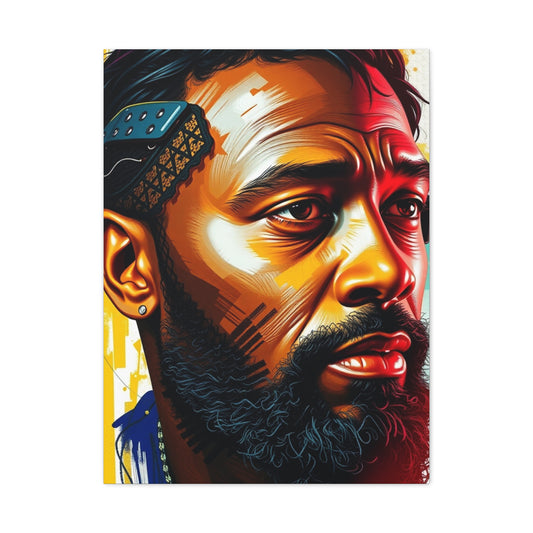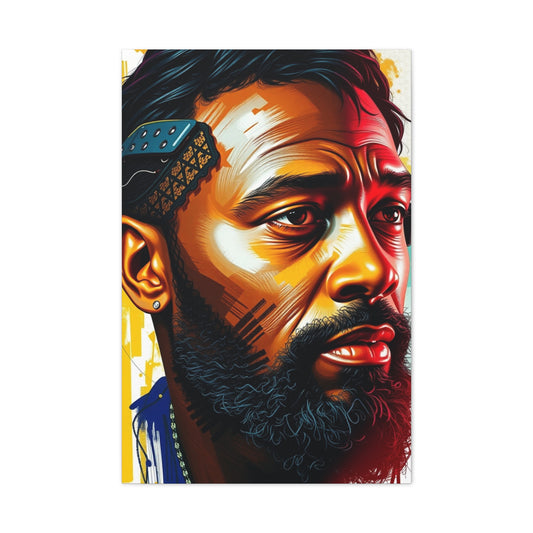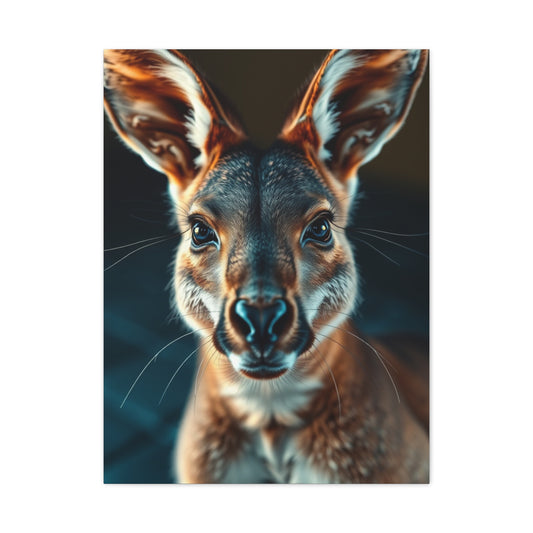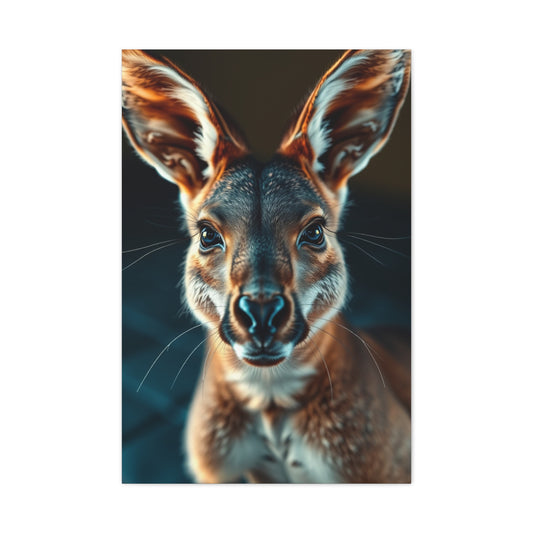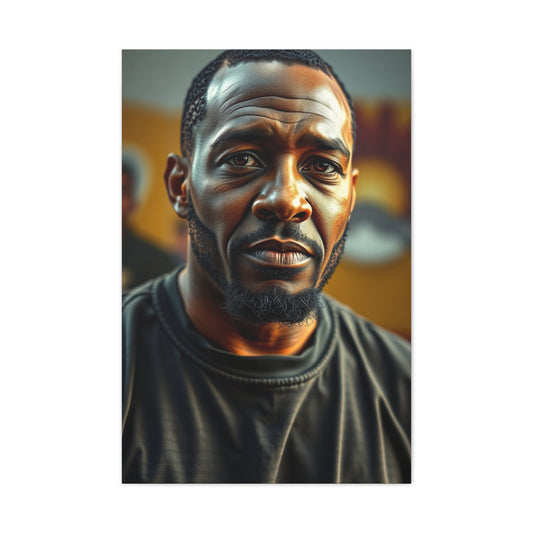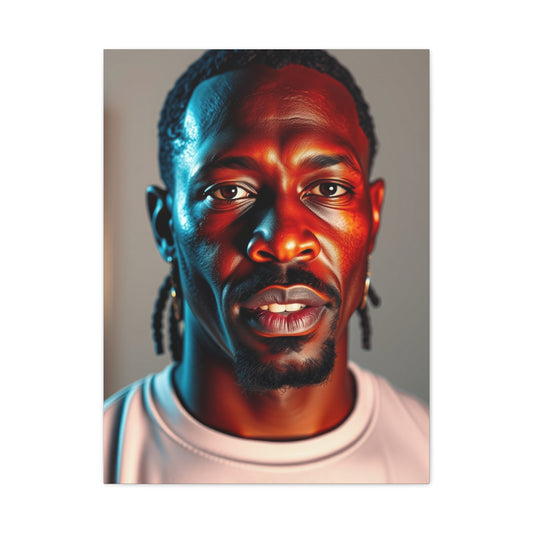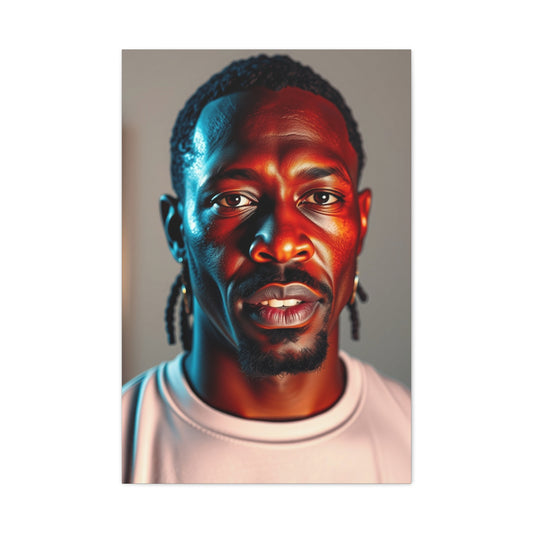Bunnies, with their soft fur, twitching noses, and ever-curious eyes, have earned their reputation as some of the most adorable creatures on the planet. Whether they're hopping through the grass in fields or cuddling up on your couch, these charming little animals have a way of captivating anyone who encounters them. As more people adopt rabbits as pets, capturing these moments in photos has become a popular way to preserve cuteness for years to come. If you’re considering taking pictures of your pet rabbit, or perhaps planning to share your bunny’s adventures on social media, knowing how to capture their best angles can make all the difference.
In this comprehensive guide, we’ll walk you through 12 essential tips and tricks to help you take the most heartwarming, eye-catching bunny photos that will showcase their natural charm and cuteness.
What Is Bunny Photography?
Bunny photography refers to the art of capturing both wild and domesticated rabbits in various settings, from their natural habitats to cozy home environments. While photographing wild rabbits can be an exciting and rewarding pursuit, this guide is focused on photographing pet rabbits—whether they’re lounging in your living room, playing in the garden, or just posing for a quick snapshot.
Rabbits are fantastic pets, loved for their gentle, playful personalities. Whether you're snapping photos to document family memories, creating content for social media, or showcasing your rabbit for business purposes like breeding, getting the perfect bunny shot requires a little more than simply pointing your camera at your pet. Proper lighting, camera settings, and positioning all play key roles in capturing their full cuteness and personality.
Though you don’t need professional photography gear to take beautiful bunny photos, using the right tools can help you capture the best images. A DSLR, mirrorless camera, or even a smartphone with the right settings can produce stunning results. Let’s dive into some tips that will make photographing your pet rabbit a fun and rewarding experience.
12 Tips for Perfect Bunny Photos
Here are the most effective strategies to help you take jaw-dropping photos of your rabbit, whether you're an amateur photographer or an experienced one.
1. Let Natural Light Do the Work
Bunnies, like most animals, are incredibly sensitive to bright lights and sudden flashes. Artificial lighting, especially direct flashes, can be both uncomfortable and potentially harmful to them. Bunnies, in particular, have large, sensitive eyes that can easily be overwhelmed by harsh lighting. For the best results, it’s crucial to photograph rabbits in environments where natural light is abundant.
Natural light has a calming, soft quality that works wonders for bunny photography. The warm glow of sunlight filtering through a window or shooting outdoors in your garden can create the perfect lighting conditions for capturing the cutest, most flattering shots of your bunny. Unlike artificial lighting, natural light provides a softness and gentleness that helps your bunny feel at ease while you work to capture their charming personality. The gentle, diffused light also emphasizes the texture of their fur and the depth of their expressive eyes, which are often the focal points of a good bunny photo.
When you photograph your bunny indoors, consider placing them near a window where the light is diffused by sheer curtains or soft fabrics. The subtle diffusion from a curtain will create a gentle effect that doesn’t overwhelm your bunny’s eyes, and it will provide even, soft lighting that will showcase the details of their fur and the beauty of their little face.
Shooting during the golden hour, the time right after sunrise or just before sunset, can add a dreamy, warm touch to your photos. During this period, the sunlight is soft and low in the sky, producing a golden glow that enhances the warmth and natural hues in your photos. This time of day is especially great for capturing serene, calming images that highlight the tenderness of your bunny's features. The angle of the light at golden hour also helps reduce harsh shadows, making your bunny appear more defined and approachable.
The consistency and warmth of natural light also help prevent any distracting color casts that might occur under artificial lighting. While indoor bulbs can often create harsh lighting that makes your bunny’s fur appear overly yellow, fluorescent, or cool-toned, natural light enhances the true colors and texture of their fur, making them appear more vibrant and realistic. If you’re aiming for a relaxed, authentic photo of your pet rabbit, natural light is a fantastic option to pursue.
|
Related Catagories: |
If you’re outdoors, try to avoid direct midday sunlight, which can cause harsh shadows and make your bunny squint or feel uncomfortable. Instead, look for shaded areas where the light is softer but still abundant, like under a tree or a covered porch. This will help your bunny feel relaxed, and it will produce more even lighting on their fur and face. If you want a slightly more dramatic look, you can photograph your bunny in dappled light, where the light comes through the leaves in patches, creating soft contrasts on their body.
2. Say No to Flash Photography
Flash photography is generally a technique to avoid when photographing rabbits. While it may seem like a quick and easy way to capture your bunny’s moment, the sudden burst of light from a flash can be startling and disorienting for your pet. Rabbits’ eyes are particularly sensitive to light, and intense flashes can disrupt their vision, potentially even causing harm. Not only can this distress your bunny, but it can also lead to photos that appear harsh and unnatural.
Flash photography often results in a cold, artificial look that doesn't do justice to the softness and warmth that natural light can provide. The stark contrast created by flash can lead to overly bright highlights and harsh shadows, distorting the true beauty of your bunny. In addition, flashes often cause “red-eye” effects, where the reflective layer in a rabbit’s eye creates a glowing red spot that detracts from the softness of their features.
To achieve the best results, it’s a good idea to simply turn off your camera’s flash altogether. Modern digital cameras, including smartphones, offer a range of settings that allow you to take photos in lower light without relying on a flash. By adjusting the exposure settings manually, you can capture beautiful, well-lit shots even in dimmer environments. For example, increasing the ISO on your camera or smartphone can help you shoot in low-light conditions without the need for a flash. If you're using a smartphone, there are several apps available that offer manual control over settings like ISO, exposure time, and focus, which can give you the flexibility to shoot in different lighting conditions without needing to rely on flash.
One of the advantages of avoiding flash is that it enables you to capture more genuine, relaxed moments with your bunny. When there’s no flash to startle them, your rabbit is more likely to act naturally, whether they’re hopping around or relaxing in their favorite spot. This results in photos that are more candid and authentic, truly reflecting your bunny’s unique personality. Flash tends to freeze a moment in an artificial, often stiff way, while natural light allows for fluid, spontaneous moments that show your bunny in their most charming form.
Why Natural Light Is Key for Bunny Photography
Natural light plays a central role in creating compelling, flattering images of your bunny. It enhances the delicate texture of their fur and creates a warm, welcoming atmosphere in the photo. Since bunnies are naturally gentle and calm creatures, they tend to react positively to softer, more ambient light, as opposed to the harsh, sudden bursts from a flash.
Moreover, shooting in natural light allows for more flexibility in terms of angles and perspectives. You can experiment with different lighting conditions—such as photographing in the early morning or during sunset—to evoke various moods. Natural light can range from a soft, delicate glow in the early morning to the golden warmth of evening light, giving you endless opportunities to capture your bunny’s personality in different ways.
When photographing your rabbit outdoors, take advantage of the natural environment. If you have a garden or a backyard, try shooting your bunny amidst flowers or plants. The greenery provides an interesting backdrop and adds to the softness of the image. The combination of your bunny’s adorable features and the vibrant, organic backdrop can create an enchanting photograph that captures both the beauty of your pet and the tranquility of the natural world.
In addition to all the technical advantages, using natural light also ensures that the photo remains true to the real-life appearance of your bunny. Artificial lights, no matter how soft, can sometimes distort the color and texture of your bunny’s fur, making them appear less vibrant. By avoiding flash and relying on the natural light around you, you allow your bunny to truly shine. You’ll also capture the softness and playfulness in their eyes, which are often the most expressive part of their face. This will help your photos convey the depth of their character, making the image more memorable.
Creative Uses of Natural Light for Stunning Bunny Photos
There are several creative ways you can utilize natural light to create truly stunning bunny photos. One technique is to experiment with backlighting, where the light source (such as the sun) is placed behind your bunny. This will create a beautiful halo effect around their fur, highlighting the delicate texture of their coat and giving the photo a dreamlike, ethereal quality. Be cautious, though, as backlighting can sometimes cause your bunny’s face to become shadowed, so adjusting your position or the light source is key to achieving the desired effect.
Another technique is to use reflections, especially if you're shooting near a body of water, a mirror, or a shiny surface. The reflection adds an extra layer of depth to your composition and can create intriguing, symmetrical images that draw the viewer’s attention. You could also take advantage of soft shadows created by the natural light filtering through trees or fabric to add dimension and interest to your photos.
For those who enjoy getting creative with composition, shooting through objects like plants, curtains, or even tinted glass can add a soft, textured layer to your photos. This will help introduce an artistic element to your bunny portraits while still maintaining the soft, natural feel of the light.
3. Use Soft Lighting to Highlight Their Fur
When photographing your bunny, lighting plays a crucial role in ensuring their natural beauty shines through. While natural light is ideal, there may be times when you need to resort to artificial lighting. In these situations, it’s essential to ensure the light you use is soft and diffused. Direct, harsh lighting can cause unappealing shadows, making your bunny’s cute face and fluffy fur appear less flattering. Harsh lighting can flatten your bunny’s features and create overly bright spots that detract from the overall aesthetic of the photo.
To avoid this, one of the best techniques is to utilize softboxes or diffusers. These tools are designed to spread light more evenly across the subject, helping to reduce shadows and create a soft, glowing effect that beautifully enhances your bunny’s fur. Softboxes, which are essentially large, fabric-covered boxes that enclose the light source, allow the light to pass through gradually, resulting in a gentle, even illumination. This method creates an incredibly flattering effect that highlights your bunny’s soft, fluffy coat while eliminating harsh contrasts that could make them look unnatural or uncomfortable.
Using a diffuser is another excellent option when working with artificial lighting. A diffuser works by scattering the light as it passes through, thus softening the beam and ensuring that no single area is overexposed. If you're using a basic light bulb or lamp for your bunny's photoshoot, simply place a diffuser between the light source and your bunny. This technique will help create even, soft lighting that ensures the bunny’s fur looks smooth, textured, and natural. The result is a much more professional, polished look that adds depth and dimension to the photo.
In addition to softboxes and diffusers, you can also use a technique known as “bouncing the light.” This involves directing the light at a nearby surface, like a wall or ceiling, to reflect and scatter the light back onto your bunny. This method ensures the light reaches your bunny at a gentle, low intensity, avoiding any harsh shadows or overly bright areas. Reflectors are essential tools for controlling lighting and can be used to fill in any dark shadows around your bunny’s face or fur, creating a balanced and soft look.
Reflectors come in various shapes and sizes, but for the most flattering results, consider using a large, white reflector. This will bounce the light evenly across your bunny’s body, providing a subtle highlight that accentuates the texture of their fur. Additionally, for a more creative effect, you can use reflectors in different colors—such as silver or gold—depending on the kind of tone you want to add to your images. A silver reflector will create a slightly cooler, more neutral effect, while a gold one will add a warm, radiant glow to your bunny’s fur. This can be especially effective for indoor photoshoots, where the natural light might be limited.
Even when using controlled lighting, it's essential to avoid placing the light directly above or too close to your bunny. Light positioned at the wrong angle can create harsh shadows under their chin, eyes, or belly, making them look less flattering. Ideally, you should position your light at a 45-degree angle from the bunny, slightly above their eye level. This creates a more natural, flattering light that highlights the bunny’s features while reducing shadows.
One of the best aspects of using soft lighting is the way it highlights the natural texture and depth of your bunny’s fur. A bunny's coat is often thick and plush, which can look absolutely stunning when captured in the right light. Soft lighting helps to reveal the fine details of the fur—whether it’s the soft gradients of color or the way their fur naturally layers and flows. When done correctly, the effect is almost magical, turning your bunny’s simple, everyday look into something truly extraordinary.
4. Groom Your Bunny Before the Shoot
Much like us, bunnies enjoy looking their best for photos. If you’ve ever seen a bunny with perfectly groomed fur, you know just how adorable and photogenic they can be. Before snapping pictures, it’s important to give your bunny a quick grooming session. Not only will this ensure that they look clean and tidy, but it will also help showcase the natural beauty of their fluffy coat, making your photos even more captivating.
Start by brushing your bunny’s fur to remove any tangles, knots, or loose hair. Rabbit fur, especially long-haired breeds, can become matted if not regularly brushed, and this can detract from the overall smoothness and fluffiness you want to highlight in the photos. Brushing also stimulates their coat, making it appear fuller and healthier, which is exactly what you want for an eye-catching photo. For short-haired bunnies, a gentle brushing will still help to remove loose fur and prevent any shedding from getting in the way of your shot.
Regular grooming can also be a great bonding activity with your rabbit, helping to reduce any stress or anxiety they may feel during the photoshoot. A relaxed, comfortable bunny is far more likely to sit still or engage with you naturally during the shoot, resulting in more authentic, adorable photos.
If you plan to give your bunny a bath before the shoot, make sure they are thoroughly dried before bringing them in front of the camera. Wet fur can look limp and flat, while a bunny with a soft, fluffy coat will always look more photogenic. A blow dryer on a low, cool setting can help dry their fur quickly, but always be cautious to avoid overheating them. Once dry, give them one final brush to ensure their coat is as smooth and fluffy as possible.
Besides grooming their fur, it's essential to consider other aspects of your bunny's appearance. A quick nail trim before the photoshoot can prevent any accidental scratches to their delicate skin. Long nails can also be distracting in close-up photos, so trimming them beforehand will make your bunny appear more polished and neat.
|
Related Catagories: |
In addition to fur and nails, check your bunny’s eyes and ears for any signs of dirt or discharge. Rabbits are naturally clean animals, but a quick check to make sure their eyes and ears are clear will help ensure they look their best in front of the camera. Cleaning their eyes gently with a damp cotton ball can remove any dried matter that may have accumulated, and wiping the inside of their ears with a soft cloth can prevent any buildup that may detract from their cuteness.
Grooming can also help your bunny feel more at ease during the photoshoot. Rabbits are creatures of habit, and if you groom them before the shoot, they may associate the process with positive experiences. This will make them more comfortable and relaxed, which is key to getting the best possible shots.
After all, bunnies are all about looking their best when they’re out on display, whether they’re cuddling in the arms of a child, playing with a toy, or hopping around their favorite space. Their fur is one of their most adorable features, and with a little care and attention, you can highlight this in the most stunning way. A well-groomed bunny will not only look its best but will also exude a calm, happy demeanor that will make your photos even more heartwarming.
5. Get on Your Bunny’s Level
Photographing your bunny at their eye level is essential for capturing their true essence. Just like humans, animals have a way of expressing emotions through their eyes, and rabbits are no exception. Their large, soulful eyes are one of their most adorable features. By getting down to their level, you create an authentic connection between the viewer and your pet. The perspective change brings the viewer closer to the rabbit's world, allowing them to experience the world as the bunny sees it.
Standing above your rabbit while taking pictures often leads to photos that lack depth or expression. The bunny might look small or even distant, and their face may seem washed out. However, when you crouch down to their level, their adorable features come to life. You can fully showcase their personality—whether it's the curiosity in their eyes or the playful tilt of their ears. In this position, your photos will feel more engaging, drawing the viewer's gaze directly to the bunny’s face, especially their expressive eyes.
Getting down on the floor or even lying down will help you capture more intimate, close-up shots. You can experiment with different angles to capture not only the rabbit’s face but also the contours of their little body. Rabbits have such unique anatomy, and photographing them from a ground-level perspective emphasizes their cuteness and the soft, fluffy nature of their fur. Moreover, getting down to their level helps you capture them in a more natural setting, as they feel more comfortable at their own height.
This approach gives you the ability to create photos that tell a story—whether the rabbit is lounging, nibbling on a treat, or playfully hopping around. By photographing from their perspective, you’ll capture them in their most authentic state. These shots evoke a sense of warmth and closeness, making your photos more memorable and meaningful.
Additionally, shooting at bunny’s eye level is a fantastic way to engage your audience. Studies show that photos taken at eye level are more emotionally resonant and relatable. When a viewer looks at a photo of a bunny from its own viewpoint, they are more likely to connect with it on a personal level. The shot feels more intimate, almost as if the bunny is gazing directly into the camera, allowing the viewer to feel as though they are part of the moment. This human-like connection can make the photo even more striking, leaving the audience enchanted by the rabbit’s cuteness.
It’s also worth noting that getting down to your bunny’s level allows for more flattering shots. The ground is often filled with soft textures such as blankets, carpets, or grass, which will add a gentle background that complements the bunny’s fur. The textures in the background won't overpower the subject; instead, they’ll enhance the focus on your bunny's adorable face. Furthermore, low-angle shots are perfect for capturing their natural postures and movements, particularly when they’re in action. Whether they’re stretching, hopping, or simply exploring, the low angle enhances their agility and cuteness.
One thing to remember when getting down to the bunny’s level is patience. Rabbits are naturally curious, but they are also timid creatures. They may feel shy or nervous when you suddenly get down on their level, so it's important to take your time and allow them to adjust to your presence. Take small steps to ensure your bunny feels safe and comfortable with your proximity, and try to keep your movements slow and calm. This will help you avoid startling them and allow them to act naturally, which is crucial for getting candid, heartwarming photos.
6. Try Elevating Your Bunny for a New Angle
While shooting from a low angle is perfect for capturing a rabbit's personality and emotions, there are times when a fresh perspective is needed. Not all photographs have to be shot at ground level. Elevating your bunny can provide a new angle that highlights different features and can result in creative, visually appealing shots. When your bunny is placed on a raised surface, such as a table, bed, or soft cushion, you gain a better vantage point for capturing a variety of compositions.
Raising your bunny to a slightly higher level gives you the ability to shoot from a unique perspective, which can produce images that stand out from the usual ground-level shots. For instance, capturing your bunny from above can create a more flattering look by showcasing their round, fluffy body and their cute little paws. This angle also allows for capturing their full body and surroundings in a single frame. It’s a fantastic way to add variety to your bunny’s photoshoot, as it introduces different textures and backgrounds that ground-level shots might not provide.
One of the most notable benefits of shooting from above or at a raised position is that it allows you to capture the overall surroundings. If your bunny is on a soft cushion or a cozy bed, you can showcase their environment, making the photo feel more complete. This helps provide context to the image and adds an extra layer of personality, showing your bunny in its favorite spot, relaxed and at ease.
However, it’s important to consider your bunny’s safety when elevating them. Rabbits are naturally curious and tend to explore their environment by hopping or jumping. Before placing your bunny on any elevated surface, make sure it’s stable and secure. Always test the surface to ensure that it won’t tip over or wobble, as this could cause an accidental fall, potentially injuring your pet. Secure the bunny gently on the surface and monitor them closely throughout the photoshoot. If they seem uneasy or attempt to jump off, it’s best to lower them back to the ground.
For added security, you can place a soft, non-slip mat or blanket under your bunny to create a secure, comfortable space for them to rest. This also prevents them from slipping if they decide to move around while you're taking photos. Additionally, placing your bunny on a raised surface such as a table or cushioned bed allows you to be at a more comfortable height for shooting, meaning you won’t have to strain your body while capturing the shot.
While a raised angle provides an excellent opportunity for creativity, it’s also important to maintain a level of safety and comfort for your bunny. If your pet seems agitated or stressed by being on an elevated surface, you can quickly return them to the ground. Your bunny’s well-being should always come first, so it’s essential to gauge their comfort level at all times.
If you’re looking to make the most of a raised perspective, try experimenting with different focal lengths or lenses. Using a zoom lens or macro lens can allow you to focus in on specific details, such as your bunny's cute face or delicate paws, while also capturing the wider context of their surroundings. A wide-angle lens, on the other hand, is perfect for capturing the entire scene, giving you a dynamic and expansive shot that includes both your bunny and the environment around them.
In addition to capturing different perspectives, photographing your bunny from an elevated surface also opens up the opportunity to include other elements in the frame. For example, you can photograph your bunny alongside their favorite toys, treats, or even another rabbit, creating a sense of narrative and interaction in the photo. This approach provides more storytelling opportunities, making your bunny’s photos feel more personal and engaging.
7. Gently Hold Your Bunny for the Shot
There are times when your bunny’s curiosity or energy might make them too playful to sit still for a photo. In such cases, having someone gently hold your bunny while you take the shot can help create a serene and intimate atmosphere, allowing you to capture those adorable, heartwarming moments. A bunny held with care in someone’s arms exudes warmth, and these images often convey a sense of safety and affection.
When you photograph a bunny being cradled in someone’s arms, you can emphasize the closeness and bond between the animal and its caretaker. This approach can be particularly effective when you want to showcase the relationship between the rabbit and their human family member. The gentle touch of the hands holding the bunny can convey tenderness, and the natural way a rabbit nestles into their caretaker’s arms highlights their calm, trusting nature.
To ensure that the shot looks its best, it’s important to have the person holding the bunny do so with care. They should support the bunny in a way that ensures the animal feels secure. Rabbits are prey animals by nature, so they tend to be a little skittish when they feel threatened or unsupported. When holding them, make sure their body is cradled properly and they are supported from underneath, allowing them to feel comfortable. Avoid holding them too tightly, as this can cause discomfort and make them more nervous. It’s always a good idea to keep the bunny’s head close to the person’s chest, as this can help the bunny feel safe and prevent any sudden movements that may startle them.
One of the main reasons to have someone hold the bunny during a photoshoot is to prevent the bunny from hopping around too much. While bunnies are incredibly cute when they’re moving, it can be tricky to capture them in action, especially if they’re jumping or darting around quickly. By holding your bunny gently, you’ll allow them to remain still for a few seconds, enabling you to get that perfect, focused shot. You’ll also be able to control the composition of the image, ensuring that the bunny’s face is framed beautifully and that you can showcase their best features.
The key to successful bunny portraiture is timing and patience. A well-positioned bunny in someone’s arms can provide an ideal opportunity for a close-up shot, highlighting their soft fur and expressive eyes. These types of photos evoke a sense of calmness, making them not only charming but also emotionally resonant. Whether your bunny is gazing into the camera or resting peacefully in their human’s embrace, these intimate moments create lasting memories and perfect keepsakes.
Additionally, you can experiment with different backgrounds while holding your bunny. The person holding the bunny can sit in a cozy armchair, or perhaps stand by a window with soft natural light streaming in. You can even use the arms to position the bunny against a lush, natural backdrop like a garden or field, adding more depth and warmth to the image. Regardless of the setting, the key to creating the best photo lies in ensuring that your bunny is comfortable and at ease with the person holding them.
8. Keep the Action Flowing
Bunnies are often known for their relaxed demeanor, but they are also curious and playful animals, making them perfect subjects for dynamic, action-packed photos. While capturing a bunny at rest can yield adorable results, photographing them in motion can create an entirely new dimension to your shots. Action shots highlight the energy and joy that bunnies experience while hopping, exploring, or playing. These moments can really showcase your bunny’s personality, whether they’re showing off their playful side or simply investigating their surroundings.
To keep the action flowing, engage your bunny with toys, treats, or other objects that spark their curiosity. Bunnies are often enticed by a variety of stimuli, including food and playful objects. A favorite toy or even a few scattered treats on the floor can lure your bunny into motion, giving you the opportunity to capture them mid-hop or mid-movement. The key here is to stay patient and observe your bunny’s natural movements. If you wait quietly, you’ll have a better chance of capturing their true, spontaneous actions.
When capturing action shots of your bunny, be mindful of the environment and lighting conditions. Rabbits move quickly, and if the lighting isn’t right, it could result in blurry photos or overexposed images. For indoor shots, ensure that the lighting is bright and diffused to avoid harsh shadows. If you’re shooting outside, try to photograph during the golden hour when the light is softer, or look for shady spots that will give your bunny an even, gentle light to avoid the effects of midday sun.
Using a fast shutter speed will help you freeze the bunny in motion, which is especially important when they’re hopping or running around. If your camera settings allow it, adjust the shutter speed to 1/500 or faster to prevent motion blur and ensure that every jump, leap, or stretch is crisp and clear. In some cases, a continuous or burst shooting mode can help you capture multiple frames in quick succession, ensuring you don’t miss any moment of your bunny’s playful antics.
If your bunny enjoys interacting with certain objects, such as a favorite toy or a treat, use that as a tool to get them to move in a specific direction. Holding a treat in your hand just outside the frame or placing a toy slightly out of reach can encourage your bunny to hop towards it. This technique can result in beautiful action shots that demonstrate their natural curiosity and enthusiasm.
It's also important to remember that bunnies can sometimes get tired or overexcited, which may cause them to lose interest in playing. If you see your bunny getting restless or starting to hop off in a different direction, take a break and let them calm down. This will ensure that they’re comfortable and not stressed, which can negatively affect the quality of the photos. When your bunny is at ease and ready to engage, you can continue to coax them into more playful moments.
Action shots can help create photos with a lot of energy and life, giving your images a more dynamic feel. Instead of just capturing a still, calm bunny, you'll have pictures that reflect your bunny’s vibrant personality. Whether they’re reaching for a treat, zooming around in excitement, or playing with a toy, these photos will showcase their playful side and add diversity to your collection of bunny photography.
Moreover, action shots can tell a story. When a bunny is engaged in an activity, you can capture the entire sequence—leading up to the moment they pounce, hop, or nuzzle into a new corner. These shots can reveal the natural curiosity of your pet, allowing viewers to connect with your bunny in a deeper way. It also provides a fun, storytelling element to your photoshoot, which can be ideal for creating memorable, shareable content on social media or in family albums.
9. Photograph Multiple Rabbits Together
If you have more than one rabbit, why not try taking a few group photos? Bunnies often love each other's company, especially if they’re already familiar with one another. Taking pictures of rabbits together can create heartwarming, adorable moments, such as snuggling, playing, or simply sitting together. This adds extra cuteness to your shots and allows for even more creative compositions, such as contrasting their fur colors or capturing different poses.
Including multiple rabbits also opens up more storytelling opportunities in your photography, allowing you to showcase their relationships with one another.
10. Include Kids for Extra Heartwarming Moments
Rabbits are often wonderful pets for children, teaching them compassion, responsibility, and patience. Capturing the bond between your child and their pet bunny can make for some truly heartwarming photos. Whether your child is cuddling, playing, or simply sitting next to their bunny, these moments of connection are priceless.
The innocence and joy that children express when interacting with their pet rabbit will translate into stunning, memorable photos that celebrate the love between them.
11. Create a Family Portrait with Your Bunny
Family portraits are always treasured, and adding a bunny to the mix can make the photo even more special. A picture of the whole family gathered around their beloved rabbit, smiling and interacting, will create lasting memories that everyone can cherish. These photos also celebrate the role that pets play in bringing families together, providing love, comfort, and companionship.
A family portrait with a bunny can also help preserve memories as your children and pets grow, creating a visual timeline of your family’s journey together.
12. Zoom In for the Finest Details
Sometimes, the beauty is in the details. Rabbits have intricate fur patterns, long whiskers, and expressive eyes that can make for stunning close-up shots. To capture the texture and richness of their features, use a macro lens or a zoom lens to get in close. Focus on areas like their eyes, paws, or fur to create a detailed portrait that highlights their cuteness and the delicate features that make them so unique.
Close-up shots will not only show off the beauty of your bunny’s appearance but will also add a layer of intimacy and personality to your photos.
Conclusion: Capturing the Magic of Bunnies
Photographing bunnies is a fun, rewarding experience that allows you to preserve the essence of these gentle creatures. By using the right lighting, techniques, and a little creativity, you can capture moments that will stay with you forever. Whether you’re taking a casual snapshot or creating professional-grade photos, the key is to ensure your bunny feels comfortable and safe throughout the process.
Remember, photography isn’t just about getting the perfect shot—it’s about cherishing the moments and creating lasting memories with your beloved bunny. With these 12 expert tips, you’ll be ready to snap some truly magical photos that showcase the unique charm and beauty of your furry little friend.










